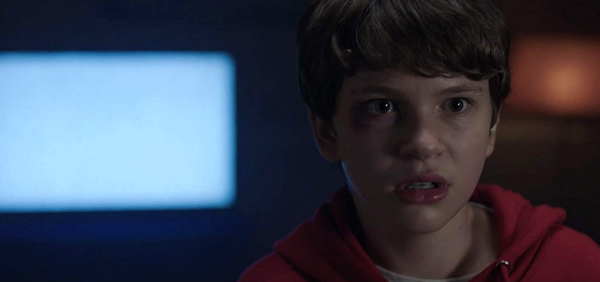
While I see the appeal of remaking, reimagining, and re-monetizing the cult schlocker Child’s Play, in which an already creepy kid’s doll gets possessed by a wise-cracking, throat-slashing serial killer, this film, like so many other redoes, feels completely unnecessary. That doesn’t mean that it’s not enjoyable for what it is, though: a simple and silly horror flick.
This latest version posits what would happen if the original Child’s Play, which came out 31 years ago, took place in current times (turns out that not much would change). Aubrey Plaza plays Karen Barclay, a single mom living in an apartment complex with her tween son Andy (Bateman) for whom she buys a Buddi doll. Andy’s a little bit older in this film, but the main difference between the 1988 and 2019 Child’s Play is in the “how” and “why” of Chucky being/becoming evil. It’s a modern take that works well, even if it doesn’t add all that much to the overall concept of “killer doll.”
Fans of the original series (of which sequels have been made as recently as 2017) will notice another big yet superficial difference. Chucky has had a bit of a redesign. It may be that Chucky Classic has been around too long, become too familiar, and is no longer scary. Chucky 2.0, however, looks definitively, how shall I put this, spooky-ooky. From the unsettling single-length haircut to the big, anime eyes and a mouth that looks like he got too much lip injection, Chucky’s new look is (I guess appropriately) weird. And, as a bonus, Chucky is voiced by Mark Hamill, making me wish that this Chucky had at least a tenth the sass of Chucky Classic. Maybe that’ll come as an upgrade in the sequel.
Despite such a close adherence to the plot of the original, Child’s Play does have its standout moments. On top of the quite capable cinematography, a few of the death sequences are memorably bizarre and over-the-top, specifically one involving Christmas lights, a watermelon patch and a gas-powered tiller. All the performances are above average as well, with Atlanta’s Brian Tyree Henry as a concerned yet affable detective, and Plaza showing a more mature side than her typical performance as an eye-roll personified.
This film is most commendable not for its achievements, but for its mistakes avoided. Just because it has a dumb plot doesn’t mean it has to be dumb. With only a couple of exceptions, the film follows its own rules—a must for a movie like this to maintain the suspension of disbelief. The film is laudable for knowing what it is and being just that. The filmmakers were neither overly ambitious nor under-committed, and because of that we now have this harmlessly pointless and pleasing piece of entertainment.













